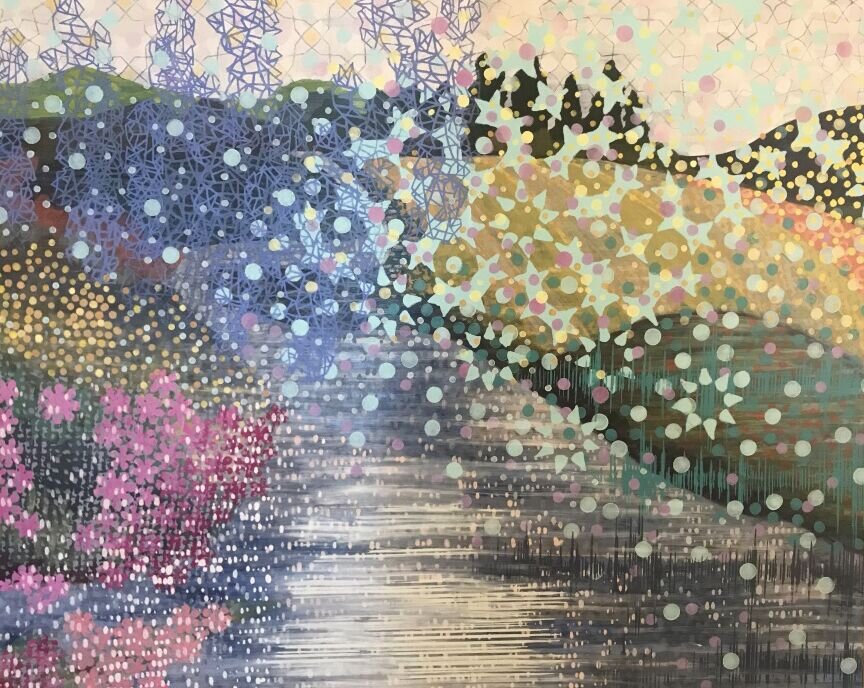A Conversation With November Featured Artist Dorothy Alig
What are your earliest memories of art? How did you become an artist yourself?
When I was quite young—6 or 7--I had a great aunt who was a painter. I remember visiting her studio and she showed me how to look closely and study the symmetry of a butterfly and of the seeds of a sunflower and she explained that artists look beyond the obvious to see things that others might miss. I admired her and tried to follow this advice.
What has been your evolution as an artist?
When I graduated from College I had two job interviews—One to be an apprentice with an artist in Boston and one with an art conservator in New York, I decided to be practical and take the conservation job. It taught me a lot and allowed me to handle and examine a lot of amazing art at close range. After working in a museum lab for 20 years I decided I should be making my own art so I left the museum and set up my own studio. I got a great education working on all of those incredible works in the museum so it was time well spent but I’m so grateful that I now get to do my own work in my studio everyday.
Are there any artists who have inspired and influenced you in your work? If so, who are they?
So many. Probably a different favorite one every day. Plus I get so much inspiration from the world around me—especially nature.
Can you describe your process for creating a work of art?
I begin with a research period to consider the ideas and images I want to work with for a new body of work. Once I havesettled on the theme I make some screens with symbols or elements of the theme so I can incorporate screen-printing in with my painting. Then I use a thin wash of paint on the paper to get the imagery started and build many layers on top of that until itfeels resolved. Sometimes there are a hundred layers or even more. Eventually it just reaches a point where I don’t think I should anything more—that’s when I know its time to frame and varnish it.
Your work consists of layers of shapes and patterns. Some of these appear in multiple paintings. Can you talk about the meaning and purpose of these?
The elements that are repeated are usually from the screen-printed images that I incorporate into each painting. These marks allow me to jump in and create interest without getting bogged down in tedious mark making and often result in surprising combinations that I might not have come up with if I were to over-think the process.
Where do you see your work going from here?
Fortunately, I cannot say. I like the quote from the novelist Jennifer Egan “ I’m looking for the idea that I can’t think of...” I too am hoping to discover something I can’t currently imagine. This keeps it interesting!




